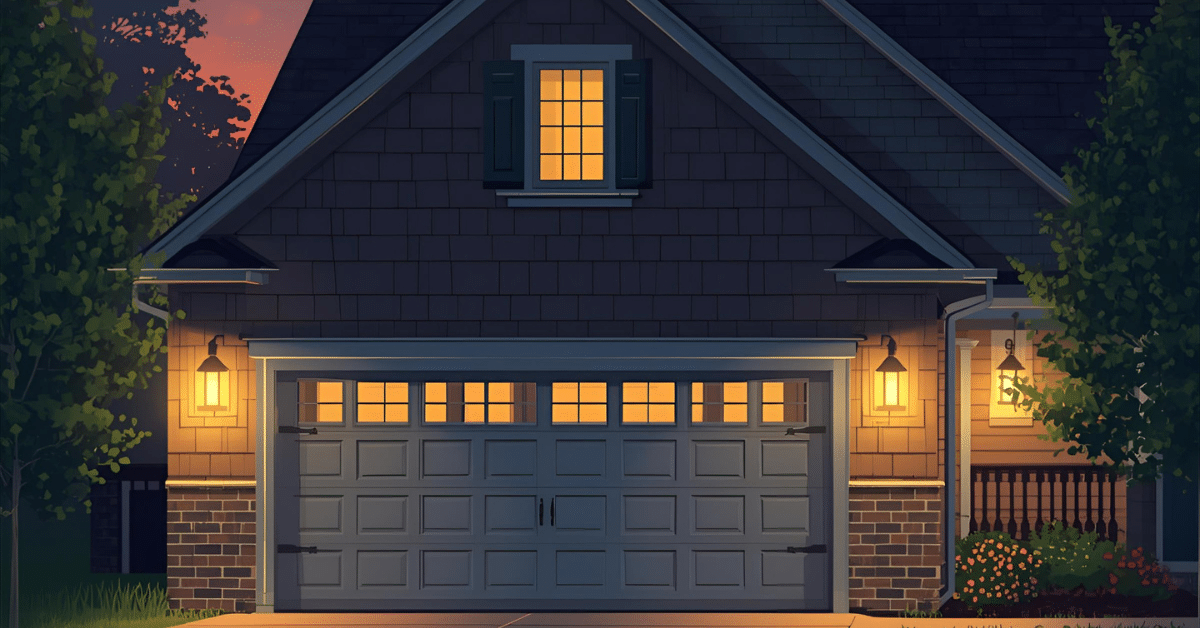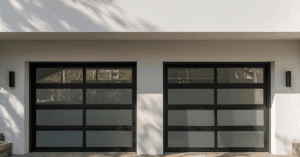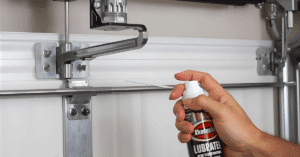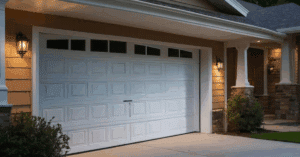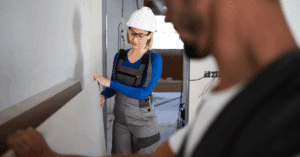Your garage door is often one of the most used entry points in your home — and unfortunately, one of the most overlooked when it comes to security. Many homeowners focus on securing their front and back doors but forget that the garage provides easy access for intruders. Knowing how to make your garage door more secure is crucial for protecting your home, vehicles, and belongings.
In this guide, we’ll share practical tips, expert recommendations, and smart upgrades you can use to strengthen your garage door security and keep unwanted visitors out.
Why Garage Door Security Matters
A poorly secured garage door can be an open invitation for thieves. It often leads directly into your home, making it a weak point in your property’s defense. With modern break-in methods and garage door hacking tools, relying on basic locks isn’t enough anymore.
Taking the time to enhance your garage door security not only protects your valuables but also gives you peace of mind knowing your family and home are safe.
1. Inspect and Reinforce the Garage Door
The first step in learning how to make your garage door more secure is checking its physical strength. Weak or damaged panels, loose hinges, and rusty parts can make it easier for intruders to force entry.
- Upgrade to a steel or reinforced door: If your current door is made of thin aluminum or wood, consider replacing it with a heavy-duty, steel-reinforced model.
- Add a locking bar or deadbolt: Manual locks provide an extra layer of protection, especially for older garage doors.
- Check door balance and tracks: A door that doesn’t close properly leaves gaps intruders can exploit.
Regular inspections and maintenance ensure your garage door remains strong and reliable.
2. Secure the Garage Door Opener
Modern convenience often comes with hidden risks. Many burglars can access garages by exploiting vulnerabilities in the garage door opener system.
- Change default codes: Always reset the factory PINs on your opener and remote.
- Use rolling code technology: Newer models use changing codes for every entry, making them harder to hack.
- Disable the remote when away: If you’ll be gone for an extended time, unplug the opener or turn off the circuit breaker to prevent access.
- Hide the remote control: Don’t leave it in your car; keep it on your keychain instead.
These small steps can significantly increase your garage door security against tech-savvy intruders.
3. Install a Smart Garage Door System
Smart technology is one of the best ways to make your garage door more secure. With smart garage door openers, you can control and monitor your garage from anywhere using a mobile app.
Some advantages include:
- Real-time alerts: Get notifications when your door opens or closes.
- Remote access: Open or lock your garage door even when you’re not home.
- Integration with home security systems: Connect your garage door to your home’s alarm or camera system for extra protection.
Look for models that include two-factor authentication and encrypted communication for maximum safety.
4. Improve Garage Lighting
Good lighting is an effective yet often underestimated security measure. Burglars prefer to work in the dark, so a well-lit garage can deter them immediately.
- Install motion sensor lights: These activate when movement is detected, startling potential intruders.
- Use LED floodlights: Bright, energy-efficient lights that illuminate the entire driveway or garage entrance.
- Add lighting inside the garage: Prevent dark corners where someone could hide.
A brightly lit garage is not only safer but also adds to your home’s overall security appeal.
5. Secure the Entry Door Between Garage and House
If your garage is attached to your home, securing the entry door is just as important as securing the main garage door. Treat it like any other exterior door.
- Use a deadbolt lock: Choose a heavy-duty model with a reinforced strike plate.
- Install a solid core or steel door: Avoid flimsy hollow-core doors that can be kicked open easily.
- Add a peephole or smart camera: This allows you to check who’s entering your garage from inside the house.
These measures ensure that even if someone breaches your garage, they can’t easily access your home.
6. Cover Garage Windows
Windows can be another weak spot in garage security. Intruders often peek inside to see if the garage is worth breaking into.
- Use frosted or tinted film: This hides your valuables while still allowing light to enter.
- Install window bars or grilles: Adds physical protection without ruining your garage’s appearance.
- Avoid storing expensive items near windows: Keep tools, bikes, and electronics out of sight.
Simple window upgrades can prevent burglars from seeing easy targets inside your garage.
7. Add a Security Camera System
Adding surveillance is one of the most effective ways to make your garage door more secure. A visible camera can discourage intruders before they act.
- Install cameras near the garage door: Cover all angles, including the driveway.
- Use Wi-Fi-enabled security systems: These let you watch live footage from your smartphone.
- Pair with motion detection alerts: Get instant notifications when unusual activity is detected.
Even a fake security camera can deter potential burglars if positioned strategically.
8. Keep the Garage Door Closed and Locked
Surprisingly, many homeowners leave their garage doors open — even for short periods — giving intruders a clear view of what’s inside.
- Always close the garage door immediately after use.
- Consider installing a door monitor or alert system that reminds you if the door is left open.
- When you go on vacation, disconnect the opener entirely for maximum protection.
Building this simple habit can go a long way in improving your home’s overall security.
9. Schedule Regular Maintenance
A malfunctioning garage door can create unintended security risks. Broken springs, loose cables, or worn-out openers make it easier for someone to force the door open.
Schedule professional garage door maintenance at least once a year. Technicians can check mechanical parts, test safety sensors, and ensure your opener’s security features are up to date.
Regular maintenance not only keeps your garage door functioning smoothly but also strengthens its defense against break-ins.
Conclusion
Your garage door is more than just a convenience — it’s a key part of your home’s security. By learning how to make your garage door more secure, you can protect your property from potential intrusions and enjoy peace of mind.
Whether it’s installing smart openers, improving lighting, or reinforcing door strength, each step adds valuable protection. Take action today to upgrade your garage door security and keep your home safe from unwanted visitors.
FAQs
Q1. What is the best lock for a garage door?
A: A heavy-duty deadbolt or slide bolt lock offers excellent protection for both manual and automatic garage doors.
Q2. Can smart garage door openers be hacked?
A: While no system is 100% hack-proof, using encrypted, rolling-code smart openers with strong passwords greatly reduces the risk.
Q3. Should I install a security camera in my garage?
A: Yes, cameras act as both a deterrent and evidence if an incident occurs. Opt for motion-activated cameras for best results.
Q4. How often should I inspect my garage door?
A: Inspect your garage door every few months for wear and tear, and schedule professional maintenance annually.
Q5. Does insurance cover garage break-ins?
A: Most home insurance policies cover garage theft, but it’s best to confirm details with your provider.

